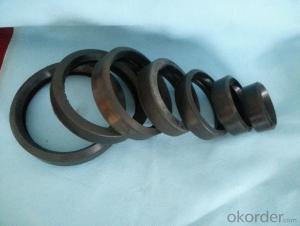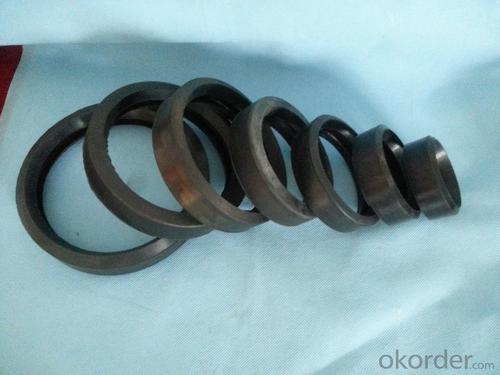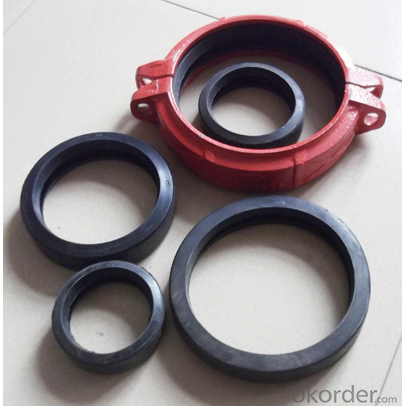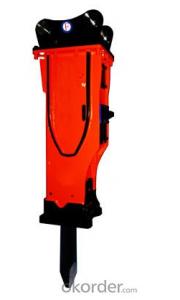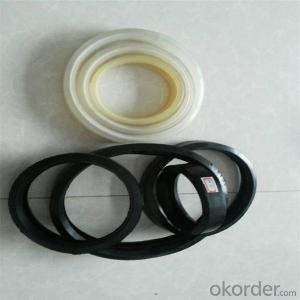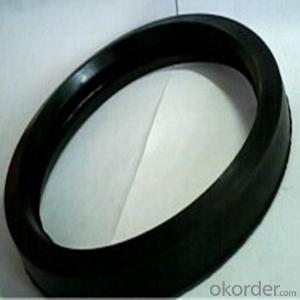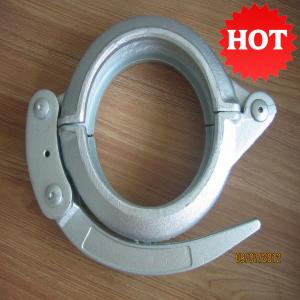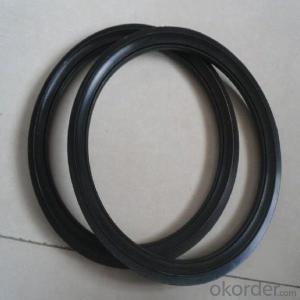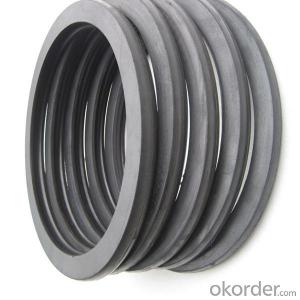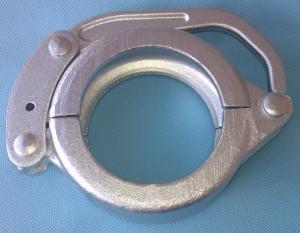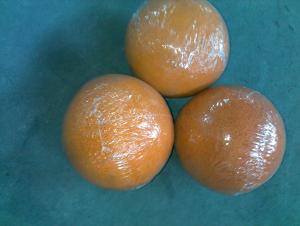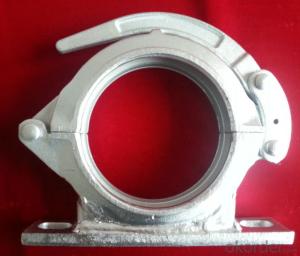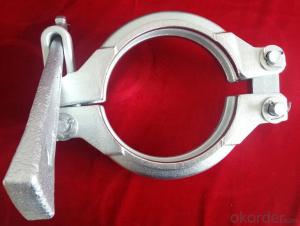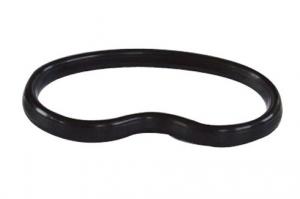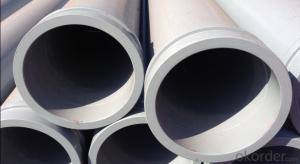Concrete Pump Parts of Rubber Gasket from CNBM
- Loading Port:
- China main port
- Payment Terms:
- TT or LC
- Min Order Qty:
- 1000 PCS
- Supply Capability:
- 100000 PCS/month
OKorder Service Pledge
OKorder Financial Service
You Might Also Like
DN125/5.5" Concrete Pump rubber gasket

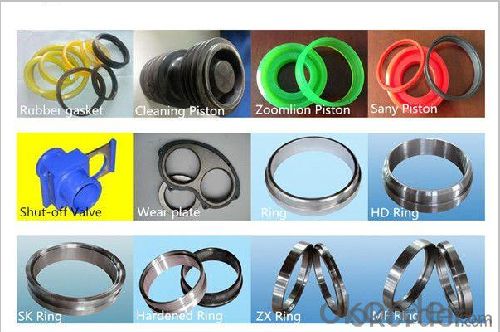
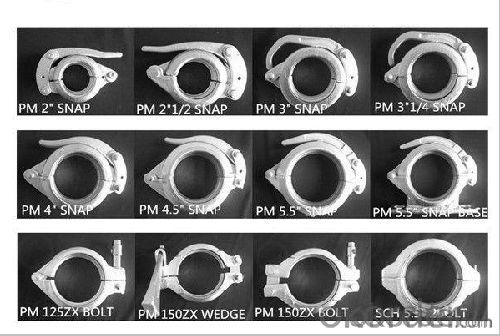
Rubber Seal is used to fulfill the airgap between concrete pump parts.
FAQ
1.How do you regarding your product quality?
As our principle is more safety to save more. In China, there are lots of manufactures of this line, but we are the first one that use the forging technic in producing, firmly meet the PM standard.
2.Can I get some samples?
Of course you can. Small sample for free, but you pay the express. For some products are not small, like concrete pump pipe, it’s very difficult to deliver one pipe of 3000mm. If it’s possible, we’d like that you can come here to visit our factory. Welcome!
3. I want to make our logo on the products, is that ok?
Yes, it’s totally ok. OME is available from us.What you should do is send your logo, brand name, or picture to us. And let other things leave on us.
Q1: How soon can we receive the goods after purchase?
A1: Within three days of placing an order, we will begin production. The specific shipping date is dependent upon international and government factors, but is typically 10 to 30 workdays.
Q2: How to make a quick resolution for after service?
A2: OKorder and our manufacture both have overseas branches all-around of world, If needed, the seller shall dispatch 2 engineers to the buyer's site for supervision of training. The buyer shall make available of necessary facilities & skilled personnel at site for training.
Q3: How do we guarantee the quality?
A3: We have established an advanced quality management system which conducts strict quality tests at every step, from raw materials to the final product. At the same time, we provide extensive follow-up service assurances as required.
Main Product Features:
· Premium quality
· Prompt delivery & seaworthy packing (20-40 days after receiving deposit)
Reliable performance
Easy and smooth operation
High safety.
· Professional Service
· Competitive pricing
- Q: What is the function of a concrete pump hydraulic filter?
- The function of a concrete pump hydraulic filter is to remove contaminants and impurities from the hydraulic fluid that is responsible for operating the pump. The hydraulic filter is designed to capture particles such as dirt, debris, and metal fragments that may be present in the hydraulic system. By removing these contaminants, the filter ensures that the hydraulic fluid remains clean and free from any potential damage-causing particles. This helps to maintain the overall performance and longevity of the concrete pump by preventing clogs, wear and tear, and potential damage to the pump's hydraulic components. Additionally, a clean hydraulic system reduces the risk of hydraulic fluid leakage, which can lead to costly repairs and downtime. Therefore, the concrete pump hydraulic filter plays a critical role in ensuring the efficiency, reliability, and durability of the pump's hydraulic system.
- Q: Can I get spare parts for both concrete pumps with and without emergency stop systems?
- Spare parts for both concrete pumps with and without emergency stop systems can be obtained. A wide range of compatible spare parts are offered by most concrete pump manufacturers and suppliers. These spare parts consist of hoses, pipes, valves, seals, and other essential components that may require replacement due to wear and tear or damage. Regardless of whether your concrete pump is equipped with an emergency stop system or not, you should be able to find the necessary spare parts to maintain smooth operation. However, it is important to note that the availability of specific spare parts may vary depending on the brand, model, and age of your concrete pump. To ensure that you obtain the correct spare parts, it is advisable to consult the manufacturer or supplier of your concrete pump. They can provide you with a comprehensive list of spare parts and help you select the appropriate ones for your specific pump. Additionally, they may also offer technical support and troubleshooting assistance for any issues related to your concrete pump.
- Q: How often should a concrete pump cleaning ball be used?
- To guarantee the cleanliness and optimal operation of the pump, it is necessary to employ a concrete pump cleaning ball after each pumping task or at the very least, on a daily basis. This cleaning ball aids in the elimination of any residue or particles that might have amassed within the pump and its conduits during the pumping procedure. Consistently utilizing a cleaning ball prevents the occurrence of obstructions and hindrances, thereby ensuring a seamless and effective pumping operation.
- Q: How can a faulty hydraulic filter affect the pump's hydraulic system?
- A faulty hydraulic filter can negatively impact the pump's hydraulic system in several ways. Firstly, it can allow contaminants such as dirt, debris, or particles to enter the hydraulic fluid, causing damage to the pump and other components. These contaminants can also clog or block the filter, reducing its efficiency and restricting the flow of fluid. This can lead to increased pressure, decreased performance, and potential overheating of the hydraulic system. Additionally, a faulty filter may fail to remove water or other contaminants from the fluid, further compromising the system's performance and reliability. Overall, a faulty hydraulic filter can result in reduced efficiency, increased wear and tear, and ultimately, system failure if not addressed promptly.
- Q: How often should concrete pump accumulators be inspected and replaced?
- To ensure proper functioning and prevent potential issues, it is important to regularly inspect concrete pump accumulators. The frequency of inspections will depend on factors such as manufacturer recommendations, usage intensity, and operating conditions. As a general rule, it is recommended to inspect the accumulators at least every six months or after every 500 hours of operation, whichever comes first. However, if the pump is used more frequently or operates under harsh conditions, more frequent inspections may be necessary. During the inspection, check the accumulators for visible signs of wear or damage, such as leaks, cracks, or corrosion. Additionally, test the pressure levels and performance to ensure they meet the required standards. When it is time for replacement, it is best to follow the manufacturer's recommendations. Typically, accumulators have a lifespan of around 3 to 5 years, but this can vary based on maintenance, usage, and environmental conditions. If any significant issues are found during the inspection or if the accumulators have reached their recommended lifespan, it is advisable to promptly replace them to avoid potential failures and ensure the safety and efficiency of the concrete pump.
- Q: Are there any specific cleaning and maintenance procedures for concrete pump spare parts?
- Yes, there are specific cleaning and maintenance procedures for concrete pump spare parts. For cleaning, it is important to remove any concrete buildup or residue from the spare parts regularly. This can be done by using a high-pressure water jet or by soaking the parts in a cleaning solution specifically designed for concrete. It is essential to follow the manufacturer's instructions when using cleaning agents to ensure the safety and effectiveness of the cleaning process. In addition to cleaning, regular maintenance is necessary to ensure the longevity and proper functioning of concrete pump spare parts. This includes inspecting the parts for any signs of wear, such as cracks or corrosion, and replacing them if necessary. Lubrication of moving parts, such as bearings or pistons, should also be done as per the manufacturer's recommendations. It is important to note that different concrete pump spare parts may require specific cleaning and maintenance procedures. Therefore, it is advisable to refer to the manufacturer's guidelines or consult with a qualified technician to determine the appropriate cleaning and maintenance procedures for each specific part.
- Q: What is the function of a concrete pump control lever?
- The concrete pump control lever serves the purpose of managing the concrete flow and direction during pumping. It grants the operator the ability to initiate or halt pumping, regulate the pump's speed, and govern the concrete's placement and speed of placement. Additionally, the control lever empowers the operator to transition between various pumping modes, such as vertical or horizontal pumping, and fine-tune the pressure of the pumped concrete. As a whole, the control lever plays a vital role in guaranteeing precise and efficient concrete pumping procedures.
- Q: What is the first generation pumping technology of concrete pump?
- The failure rate and maintenance cost are very high, and it is easy to delay the progress of the project
- Q: What is the role of a concrete pump hopper vibrator?
- The smooth and efficient flow of concrete through the pump system is ensured by the concrete pump hopper vibrator. Typically, the vibrator is attached to the hopper, which is the container holding the concrete mixture. To break up any air pockets or clumps in the concrete, the vibrator creates high-frequency vibrations. This allows the concrete to flow freely through the pump and out of the nozzle. Proper vibration is essential, as unclogged or unblocked concrete prevents delays and inefficiencies in construction. Not only does the hopper vibrator facilitate concrete flow, but it also enhances the overall concrete quality. By eliminating air pockets and ensuring a smooth, consistent flow, the vibrator reduces the risk of voids or weak spots in the finished structure. In conclusion, the concrete pump hopper vibrator plays a crucial role in ensuring successful and efficient concrete pumping, while also improving the quality of the final product.
- Q: What is the role of a concrete pump hopper agitator shaft?
- To ensure consistent and uniform mixing of concrete in the hopper, the concrete pump hopper agitator shaft is responsible. It is equipped with paddles or blades that rotate within the hopper, effectively stirring the concrete and preventing it from settling or separating. This maintains the desired fluidity and consistency of the concrete, allowing for smooth and efficient pumping without any blockages. Additionally, the agitator shaft helps to remove any hardened or stuck concrete, ensuring that the hopper remains clean and obstruction-free. Ultimately, the agitator shaft plays a vital role in keeping the concrete well-mixed and ready for pumping, thereby improving the performance and productivity of the concrete pump.
Send your message to us
Concrete Pump Parts of Rubber Gasket from CNBM
- Loading Port:
- China main port
- Payment Terms:
- TT or LC
- Min Order Qty:
- 1000 PCS
- Supply Capability:
- 100000 PCS/month
OKorder Service Pledge
OKorder Financial Service
Similar products
Hot products
Hot Searches
Related keywords
